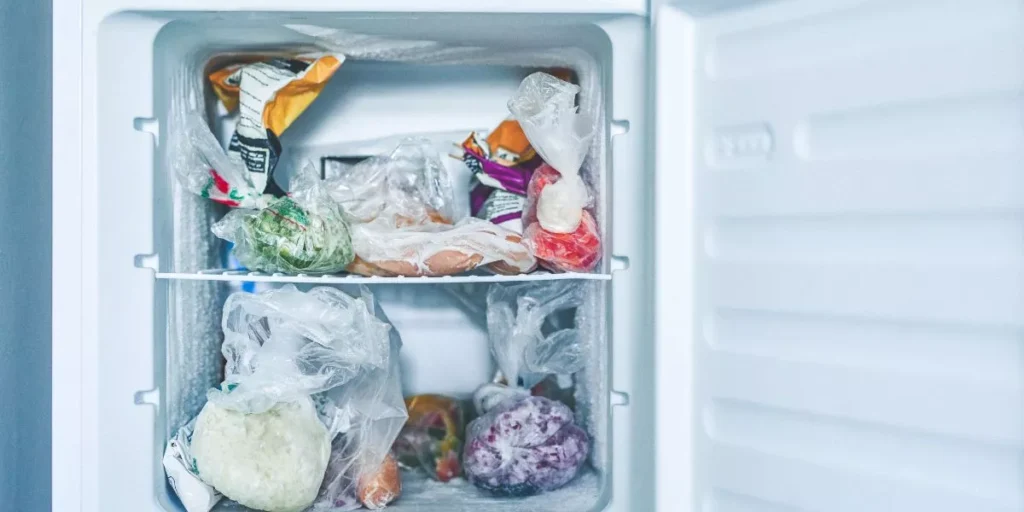
When it comes to maintaining a healthy meal prep routine, smart storage tips play a vital role in preventing food spoilage and wastage. By implementing strategic refrigerator organization techniques and utilizing the right containers, you can ensure your meals stay fresh and easily accessible. Proper labeling and dating practices further enhance your meal prep efficiency, but there’s one key aspect that ties it all together, ensuring your efforts don’t go to waste.
Proper Refrigerator Organization
Organize your fridge strategically to maximize freshness and efficiency. Start by designating specific areas for different types of food. Store dairy products like milk and yogurt on the top shelf where the temperature is most consistent. Place raw meat on the bottom shelf to prevent any drips from contaminating other items. Utilize the crisper drawers for fruits and vegetables, adjusting the humidity settings accordingly.
Consider using clear containers or bins to group similar items together. Label these containers with the date they were prepared or purchased to track freshness. Keep frequently used items within easy reach, while placing less commonly used items towards the back to prevent them from being forgotten and spoiling.
Regularly check expiration dates and remove any expired items to free up space and avoid contamination. Arrange your fridge in a way that encourages airflow to keep everything at the optimal temperature. By following these organizational tips, you can ensure your food stays fresh longer and minimize waste.
Suitable Container Selection
Consider selecting containers that are airtight to maintain freshness and prevent spills in your meal prep storage routine. Airtight containers help keep your food from being exposed to air, which can cause it to spoil faster.
Opt for containers made of glass or BPA-free plastic to ensure they’re safe for storing food. Glass containers are a great choice as they’re durable, don’t absorb odors, and are easy to clean. They’re also safe for reheating food in the microwave or oven.
Look for containers that come in various sizes to accommodate different portion sizes and meal types. Stackable containers can help save space in your fridge or pantry.
Consider investing in reusable silicone bags or beeswax wraps for storing sandwiches, snacks, or fruits. By choosing the right containers for your meal prep, you can help extend the shelf life of your food and reduce unnecessary waste.
Labeling and Dating Practices
To ensure the freshness and organization of your meals, start by clearly labeling and dating each container. By doing this, you can easily identify what each container holds and when it was prepared. Use labels that are easy to read and waterproof to prevent smudging. Include the name of the dish and the date it was made. This practice helps in prioritizing meals based on freshness and ensures you consume them before they spoil. Additionally, it aids in tracking how long items have been stored, preventing you from accidentally consuming expired food.
When dating your containers, remember to follow the first in, first out (FIFO) rule. This means placing newer containers behind older ones, so you use the older meals first. By practicing proper labeling and dating techniques, you can reduce food waste, save time when choosing meals, and maintain a healthy meal prep routine. Make it a habit to check labels regularly and dispose of any items that have passed their recommended storage time to avoid consuming spoiled food.
Freezing Techniques and Tips
Start by ensuring your containers are freezer-friendly before applying smart freezing techniques and tips to extend the shelf life of your meals. Opt for freezer-safe containers made of materials like glass, heavy-duty plastics, or aluminum foil to prevent freezer burn and maintain the quality of your food.
When freezing meals, make sure to cool them down to room temperature first to avoid condensation that can lead to ice crystals forming. Divide large portions into smaller, individual servings for easier thawing and reheating. Remember to label each container with the contents and date to keep track of what’s in your freezer and when it was prepared.
To maximize space in your freezer, consider using stackable containers or bags that can be stored efficiently. Additionally, utilize your freezer door for flat items like bags of frozen vegetables or fruits. Rotate older items to the front for easier access and quicker use, ensuring nothing gets forgotten and goes to waste.
Trending Products














